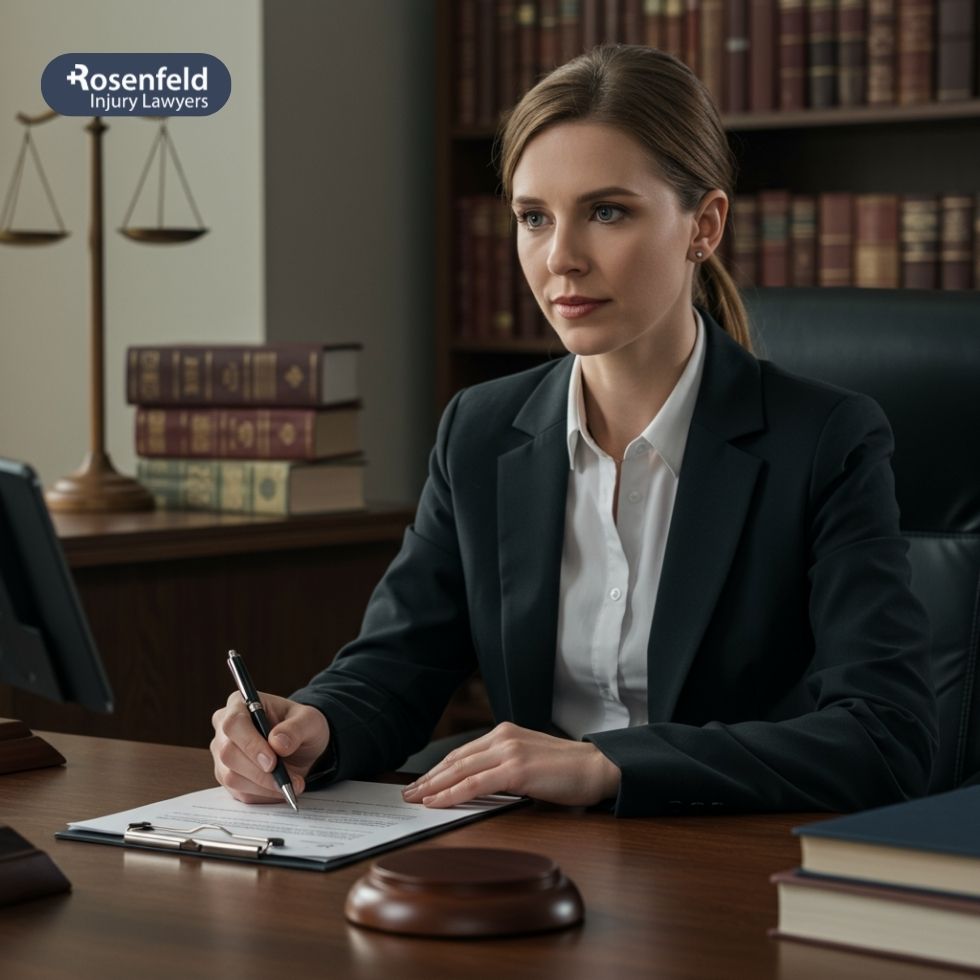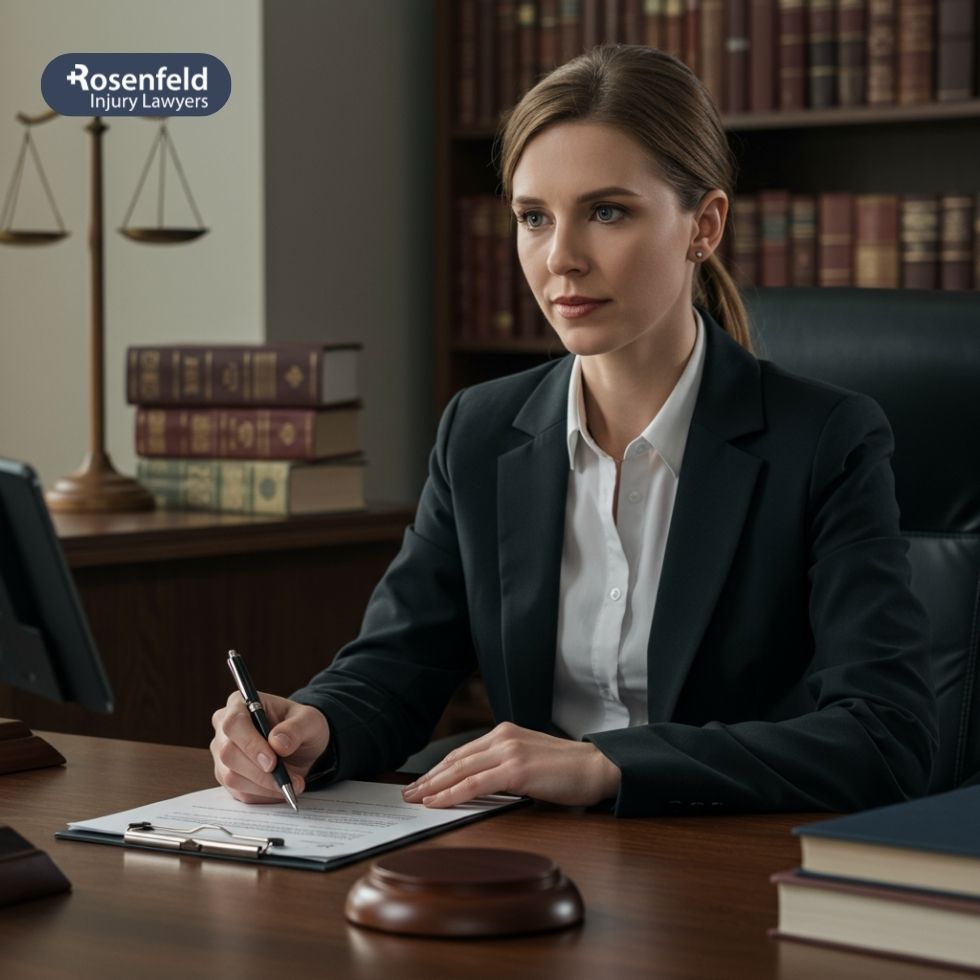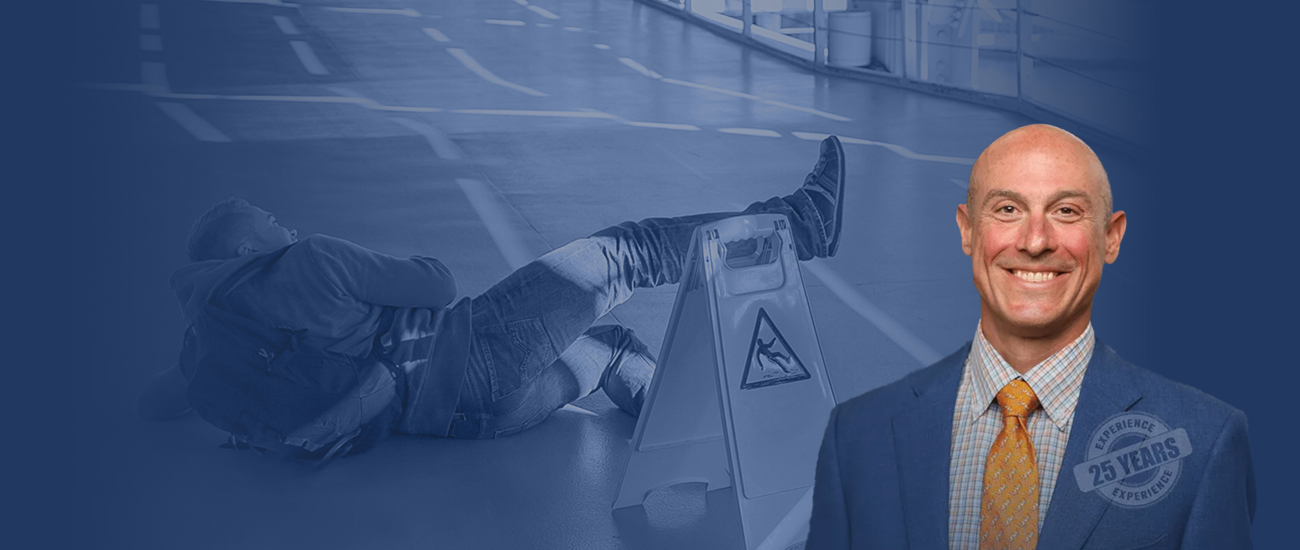How to Win a Slip and Fall Case in Illinois
Slip and fall accidents, such as tripping on wet floors in Logan Square, can result in serious injuries or even permanent disability. In this article, our top-rated attorneys teach you how to win a slip and fall case by applying relevant laws and demonstrating liability. Contact us today for a free consultation and learn more about the claims process.
Understand Your Legal Rights
Illinois slip and fall laws place significant responsibility on property owners for dangerous conditions that may lead to injury. However, injured individuals can also be partially liable, which may reduce their compensation.
Property Owners’ Duties
The Illinois Premises Liability Act requires property owners to take reasonable care to prevent dangerous conditions on their premises (740 ILCS 130/). However, the Illinois Supreme Court has established in cases like Bruns v. City of Centralia that municipalities and property owners are not required to warn invitees of open and obvious hazardous conditions, such as cracked pavement.
Notable Provisions for Cases Involving Snow
Slip and fall accidents on snow can be more complicated, as the Illinois Ice and Snow Removal Act holds owners harmless for natural accumulation (745 ILCS 75/). The Natural Accumulation Rule has been used as a defense in numerous Illinois Supreme Court cases.
However, it is possible to hold owners accountable if hazardous conditions existed because of inadequate maintenance or faulty design, which would result in unnatural accumulation. For example, Murphy-Hylton v. Lieberman Management Services found that a property management company could be held accountable for a slip and fall claim because improper maintenance led to an increased accumulation that would not have occurred on a well-maintained walkway.
The Chicago Municipal Code also requires property owners to maintain safe sidewalks, including snow removal (4-4-310 & 10-8-180). Other municipalities do not have this rule, so our law firm will also review municipal codes to determine how to win a slip and fall case based on the city.

Victims’ Share of Fault
Illinois uses modified comparative negligence, which means that plaintiffs can sue if they are no more than 50% responsible for the accident (735 ILCS 5/2-1116). Your settlement will be reduced proportionate to your percentage of blame.
For example, assume the slip and fall accident occurred while you were walking down State Street and looking at your phone. You may be considered 30% liable, and so you will receive 30% less in damages than if you were entirely blameless.
Statute of Limitations
The statute of limitations for slip and fall cases in Illinois is just two years (735 ILCS 5/13-202). You must contact a personal injury attorney as soon as possible so that we have adequate time to investigate your claim and negotiate with the relevant insurance company.
Establish the Property Owner’s Breach of Duty
If you are injured on someone else’s property and want to file a slip and fall claim, you must demonstrate that the property owner knew about dangerous conditions on their premises but failed to take action.
Proof of Hazard
Your lawyer needs to demonstrate that there were hazardous conditions on the premises that were the primary factor in the slip-and-fall case. Common circumstances leading to slip and fall accidents include the following.
Wet Floors: In places like grocery stores, nursing homes, and movie theaters, this may be due to regular cleaning, while in other areas, such as pools and hotels, it could be caused by splashing or spillage.
Spills: Gas stations may have fuel spills, which can be quite slippery on concrete. Stores like Walmart could have spilled juice or water on the floor, causing serious slip-and-fall cases.
Unstable Construction: Stairways, railings, and floors may be loose or damaged, potentially leading to accidents.
Uneven Pavement: Government buildings, apartment complexes, and stores might have cracked pavement outside of the building, resulting in slips and falls.
Roofs: Roofing is one of the most dangerous professions due to the risk of slip and fall cases from significant heights.
Poor Maintenance: All property owners, whether they own private property, a casino, or a hotel, are required to maintain lighting systems, floors, railings, and roofs to prevent dangerous conditions.
Proof of Notice
According to the Illinois Premises Liability Act, property owners cannot be held liable for dangerous conditions that they were not aware of (740 ILCS 130/2). Our lawyers must demonstrate that they did know or should have known about these conditions, called actual notice versus constructive notice.
Actual notice means that the owner knew of the hazardous condition. They may have seen it, been told about it, or caused the problem. For example, an airport worker may notice a fuel spill but fail to report it to their supervisor, and then another worker trips and suffers soft tissue injuries. This would be considered actual notice.
Constructive notice means that if the owner was paying attention or properly maintaining their premises, they would have identified the hazardous condition and fixed it. One example of this could be if there were a loose banister on someone else’s property that caused a slip-and-fall accident. The property owner should have noticed this issue and fixed it before anyone got hurt.
Proof the Hazardous Condition Caused Your Slip and Fall Injury
When considering how to win a slip-and-fall case, evidence is one of the most crucial components. This demonstrates comparative negligence, as it shows that the property owner failed to maintain their property and prevent hazardous conditions.
Proof that can be used in a slip-and-fall claim includes:
- Photos and videos of the accident scene
- Surveillance footage of the slip-and-fall accident
- Maintenance records prior to the slip and fall accident
- Medical records from your treatments
- Witness statements
- Doctors’ evaluations of your injuries
- Expert testimony from engineers or other professionals
Calculate the Full Scope of Damages
You may receive both economic and non-economic damages in a slip-and-fall case, depending on what type of claim you file.
If you were injured at work, then you can seek a workers’ compensation claim. This will compensate you for medical expenses and a portion of your lost wages, as well as provide for vocational rehabilitation and physical therapy to help you return to work sooner. If you become permanently disabled, you can also file for disability payments and receive scheduled settlements from workers’ comp.
Surviving family members of deceased workers can also receive death benefits that equal a portion of their lost income through workers’ comp claims.
In a personal injury lawsuit, you can receive both economic and non-economic damages. Economic damages can include:
- Medical expenses
- Out-of-pocket medical costs
- Lost wages
- Future lost income
- Property damage
- Funeral and burial expenses for wrongful death
Non-economic damages cover the emotional and social impact of a slip-and-fall case on you and your family. These include:
- Pain and suffering
- Emotional distress
- Loss of enjoyment of life
- Loss of consortium
- Loss of companionship for wrongful death
- Grief for wrongful death
- Inconvenience
The Illinois Supreme Court case Lebron v. Gottlieb Memorial Hospital removed the cap on non-economic damages, meaning that juries can award whatever they feel is appropriate for your claim.
If your slip-and-fall case goes to trial, you may receive punitive damages. These are cases where a slip-and-fall accident results from a wanton disregard for safety and life. Examples include situations where the property owner or someone else intentionally pushes you down the stairs or refuses to fix dangerous conditions despite knowing they could cause harm.
Be Cautious During the Immediate Aftermath
It is crucial to know what to do after a slip and fall accident, as this can ensure you have the best possible chance of earning compensation. Follow these steps as soon as possible.
Document the Scene Immediately
Contemporaneous evidence can be crucial to a slip-and-fall case, as the property owner may attempt to fix the damage before investigators arrive at the scene. Take photos and videos as soon as possible, showing the condition of the surrounding area and the cause of the accident.
You should also take notes about anything you noticed before, during, and after your fall. Ask someone to take photographs of your injuries, which can be used to prove that you were hurt on the day of the accident.
Identify Witnesses and Gather Statements
If anyone else was present at the scene, get their names and contact information. At stores, government buildings, and other public places, you should get details from supervisors and workers who were present at the time and could attest to hazardous situations on the premises.
Avoid Making Statements That Could Be Used Against You
Do not speculate about fault or imply that you were responsible for your injuries. You should not provide any recorded statements to insurance adjusters or other third parties, as this could be used against you. Always talk to an attorney before making any statements.
Additionally, do not post about the accident on social media, as this may prove you were not as seriously injured as you claim.
Seek Prompt Medical Attention
Always go to the hospital as soon as possible. This not only ensures that you have not suffered severe injuries like spinal cord damage or a traumatic brain injury, but it also produces medical records that can prove the extent of your injuries. Visit the closest emergency room, such as Rush University Medical Center or Advocate Illinois Masonic Medical Center.
File an Incident Report
If your accident occurred in a public place, like a business or government office, you should report the incident to the manager or security officer. This provides proof that you notified the property owner of the situation. Keep a copy for your own records and provide it to your attorney.
Preserve Footwear and Clothing
Slip and fall cases require proof that there are dangerous conditions on the premises that someone else caused. The defense will attempt to argue that your footwear or clothing caused you to slip and fall, such as wearing high heels on stairs at the Aragon Ballroom.
By preserving your shoes and clothing, you can help our attorneys prove that it is the property owner, not you, who is at fault.

Hire an Experienced Slip and Fall Lawyer
You should hire a slip-and-fall lawyer as soon as possible after your accident, as we know how to win a slip-and-fall case and will push for maximum compensation. Additionally, we have access to resources that the average person would struggle to find, such as expert witnesses. These are just a few of the many ways we can assist you.
Build a Case Around Prior Complaints or Violations
We must demonstrate that the property owner was aware of dangerous conditions but refused to fix them. This can be proven through maintenance records, private communications, or old photographs of the property that show the defect.
If there were any previous complaints, like another person falling in the same place, this provides further evidence that the defendant should have been aware of the issue but failed to act.
Prepare for Insurance Company Tactics
Insurance companies do not want you to receive fair compensation, as this would take away from their bottom line. Some of their most common tactics include denying the claim, delaying the investigation, demanding further information, or providing a lowball offer.
We are well-versed in these tactics and will hold the insurance company accountable for paying your claim. For example, we will accurately assess your damages and provide meticulous records to support your claim, demonstrating why you deserve the highest possible compensation. We will also communicate with them repeatedly to ensure they respond promptly.
Another common tactic is to claim that you were not as badly hurt as you say or that your injuries were due to a preexisting condition. Our attorneys will secure your medical records and consult with doctors to demonstrate how any prior medical history is irrelevant to your claim.
Be Prepared to File a Lawsuit if Necessary
In many cases, the insurance company will settle out of court because litigation is expensive and time-consuming. However, sometimes the company will refuse to offer a fair settlement. You must work with an attorney who is familiar with the Circuit Court of Cook County and can file the proper paperwork.
According to Illinois law, you only have two years to file a personal injury claim (735 ILCS 5/13-202). Negotiation can take up a significant portion of this time, meaning you may lose out on compensation if you don’t act quickly. Thanks to our years of experience, we can expedite the lawsuit filing process, following all proper procedures and ensuring effective communication between all parties.
Contact Our Law Firm to Help You Recover Compensation!
Our law firm has a 98% success rate honed over 25 years of trial experience. We work on a contingency fee basis, meaning our attorney’s fees are deducted from your settlement rather than paid out of pocket. This ensures everyone can afford world-class legal representation, no matter their financial means. To schedule your free consultation with a slip-and-fall lawyer, contact us today.







